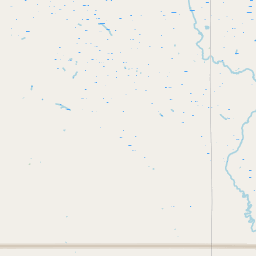Scandia
Historical marker location:
Sisseton, South Dakota
( Marker can be reached from 462nd Ave., ½ mile north of 113th St..)







© OpenStreetMap contributors
Lutheran Free Church
Loading...
Searching for other points of interest within 3 miles of this location.South Dakota was the site of the Wounded Knee Massacre, a tragic event in which over 150 unarmed Native American men, women, and children were killed by U.S. troops in 1890. Today, the site is a National Historic Landmark.
About Roberts County
Roberts County Timeline
Roberts County, South Dakota is located in the northeastern part of the state, near North Dakota. The area was originally inhabited by indigenous peoples, primarily members of the Sisseton Wahpeton Oyate tribe. In the 1860s, European settlers began moving into the region, prompted by the prospect of available farmland and the construction of the railroad in the nearby area.
The county was officially organized in 1883 and named after S.G. Roberts, a prominent politician in the Dakota Territory. The town of Sisseton was established as the county seat. In the early years, agriculture played a crucial role in the county's economy, with settlers primarily engaging in farming and cattle raising.
Over time, the county experienced growth and development. The completion of the Chicago, Milwaukee, St. Paul and Pacific Railroad in 1914 further boosted the local economy by improving transportation routes and connecting the area to larger markets. The county's population grew steadily during the early 20th century, with towns such as Summit and New Effington emerging as centers of commerce.
Like many rural areas in the United States, Roberts County faced challenges during the Great Depression and subsequent years. However, the county's agriculture-based economy remained resilient, and efforts to diversify the local economy eventually gained traction. Today, Roberts County is known for its beautiful natural landscapes, including several lakes and wildlife refuges, and it continues to be a vibrant agricultural community with a rich history.
The county was officially organized in 1883 and named after S.G. Roberts, a prominent politician in the Dakota Territory. The town of Sisseton was established as the county seat. In the early years, agriculture played a crucial role in the county's economy, with settlers primarily engaging in farming and cattle raising.
Over time, the county experienced growth and development. The completion of the Chicago, Milwaukee, St. Paul and Pacific Railroad in 1914 further boosted the local economy by improving transportation routes and connecting the area to larger markets. The county's population grew steadily during the early 20th century, with towns such as Summit and New Effington emerging as centers of commerce.
Like many rural areas in the United States, Roberts County faced challenges during the Great Depression and subsequent years. However, the county's agriculture-based economy remained resilient, and efforts to diversify the local economy eventually gained traction. Today, Roberts County is known for its beautiful natural landscapes, including several lakes and wildlife refuges, and it continues to be a vibrant agricultural community with a rich history.
Roberts County Timeline
This timeline provides a concise overview of the key events in the history of Roberts County, South Dakota.
- 1862: Roberts County established.
- 1878: First post office opened in Roberts County.
- 1880: First courthouse built in Roberts County.
- 1898: State Bank of Roberts County founded in Sisseton.
- 1919: Dakota State Normal School, later known as Northern State Teachers College, opened in Sisseton.
- 1925: Lake Traverse Indian Reservation established in Roberts County.
- 1954: Agency Village incorporated as a town in Roberts County.
- 1972: Sisseton Wahpeton Oyate tribal government headquarters established in Roberts County.
- 1996: The Roberts County Courthouse was added to the National Register of Historic Places.